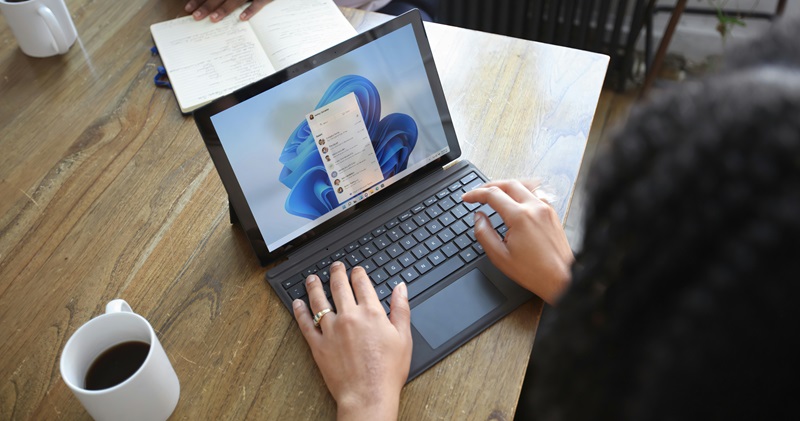Microsoft is accelerating its integration of AI technologies into the Windows operating system, particularly through their Copilot and Copilot+ initiatives in partnership with OpenAI. Initially launched in May on Qualcomm’s Snapdragon X Elite and X Plus laptop chips, Copilot+ offered features like live captions, image generation in MS Paint, and game upscaling. This robust suite of AI-powered features is now expanding to AMD’s Ryzen AI 300 series and Intel’s Core Ultra 200V series chips, which are expected to launch in November. This move signifies Microsoft’s swift pivot toward AI-enhanced PCs, marking a stark departure from the company’s traditionally slow adaptation to new trends. By embedding AI deeply into the Windows ecosystem, Microsoft is aiming to elevate user experience through advanced processing capabilities provided by newer generations of processors equipped with neural processing units (NPUs).
A New Era of AI-Enhanced PCs
The upcoming Intel Core Ultra 200V chips promise to bridge existing gaps by delivering superior AI processing power with Arm-like battery efficiency. While Intel’s Meteor Lake chips, providing 34 TOPS of AI processing power, did not meet the Copilot+ certification criteria requiring at least 40 TOPS, the new Intel Core Ultra 200V aims to fulfill these stringent requirements. This development hints at an era where AI capabilities are deeply ingrained into everyday computing, significantly improving functionalities and enhancing user interfaces. Industry observers generally agree that the integration of AI could revolutionize user experience on PCs. However, whether these advancements will significantly attract consumers remains to be seen.
The democratization of AI capabilities is a notable trend, as the collaboration between Microsoft, Intel, and AMD could expand Copilot+ to a broader user base. By overcoming the limitations faced by Arm-based Qualcomm systems, these new processors could democratize high-level AI functionalities and make them accessible to more users. Amidst this rapid innovation, Microsoft’s timetable also includes introducing features like Recall screen analyzer, set for testing in October after initial critiques. This feature specifically aims to enhance gaming experiences but also expands AI utilities across various applications, potentially making it a significant draw for tech-savvy consumers.
The Untapped Potential of GPUs
Despite Microsoft’s ambitious strides toward AI-enhanced computing, a critical point in their strategy is the substantial AI processing potential of modern GPUs. Nvidia has pointed out that GPUs notably outpace the NPUs in Intel and AMD’s new processors. However, Microsoft has clarified that GPU support will come in a future Windows update, thereby leaving room for further enhancement and optimization of AI features. The promise of GPU integration suggests that AI capability on Windows could become even more robust, satisfying power users and professionals who rely heavily on such technologies.
The substantial AI processing power of GPUs becomes an even more critical discussion when considering future updates and potential enhancements. Microsoft’s current omission of GPU support, in a way, underscores the challenges and intricacies involved in seamlessly integrating AI across various hardware platforms. The imminent addition of GPU support could be a game-changer, allowing even more powerful AI-driven features and paving the way for applications we may not yet foresee. Although integrating AI with traditional CPU and NPU combinations is already a significant leap, the inclusion of GPUs could magnify the efficiency and efficacy of these AI functionalities, offering unprecedented advantages in both personal and professional computing realms.
Moving Towards AI-Integrated Personal Computing
While Microsoft has made significant advances in AI-enabled computing, a key element in their strategy is leveraging the substantial AI processing power of modern GPUs. Nvidia notes that GPUs significantly outperform the NPUs found in Intel and AMD’s latest processors. However, Microsoft has indicated that GPU support will be included in a future Windows update, suggesting room for further enhancement and optimization of AI capabilities. This promise of integrating GPU support implies that Windows’ AI capabilities could become even more robust, catering to power users and professionals who depend on such technology.
The critical role of GPU AI processing power becomes even more relevant when considering future updates and potential benefits. Microsoft’s current lack of GPU support highlights the complexities in seamlessly integrating AI across different hardware platforms. Yet, the upcoming addition of GPU support could transform the landscape, enabling more potent AI-driven features and applications that we haven’t yet imagined. Although AI integration with traditional CPU and NPU combinations marks significant progress, the incorporation of GPUs could greatly amplify the efficiency and performance of these AI functionalities, offering unprecedented benefits in personal and professional computing.

